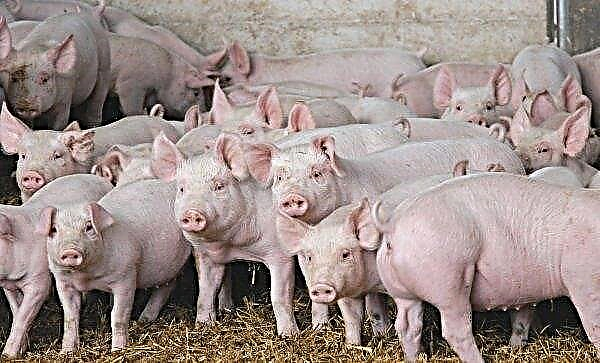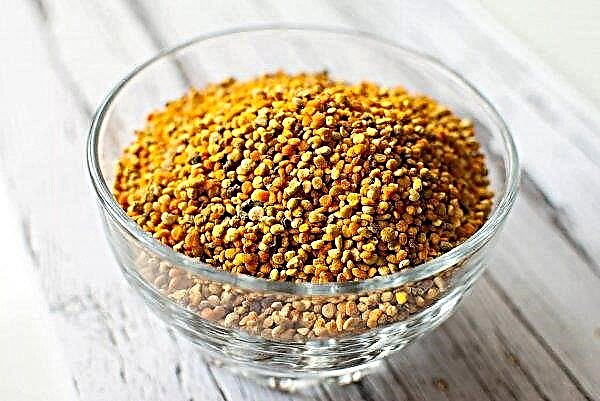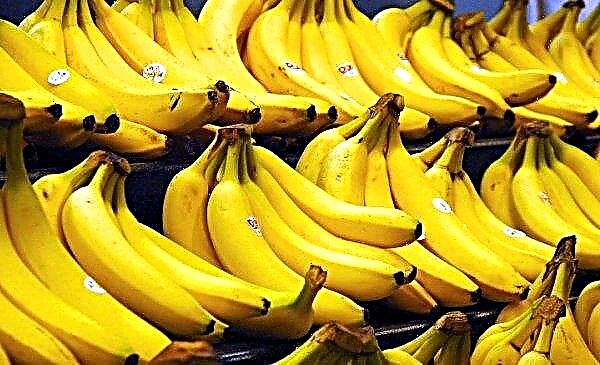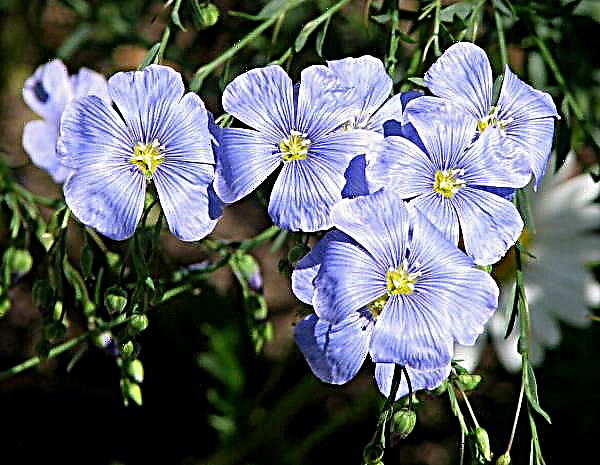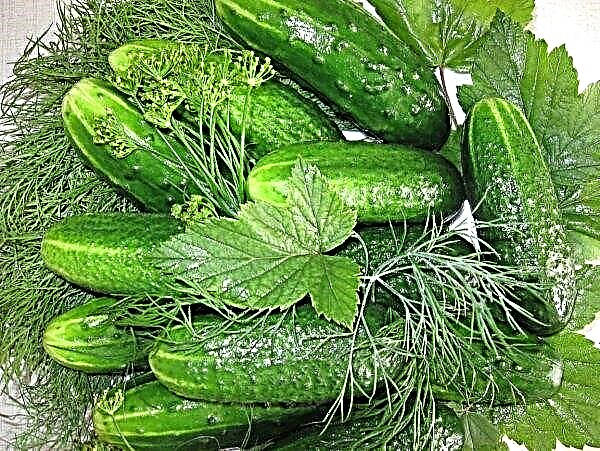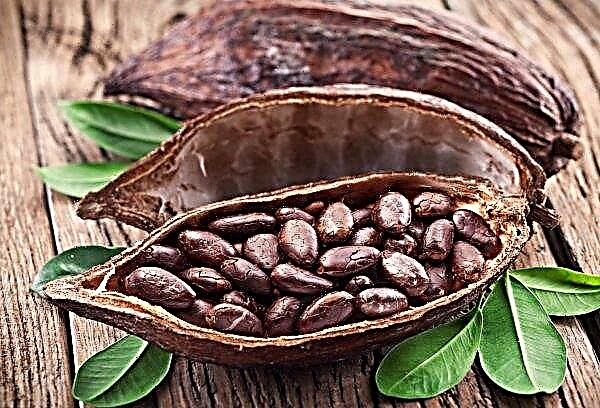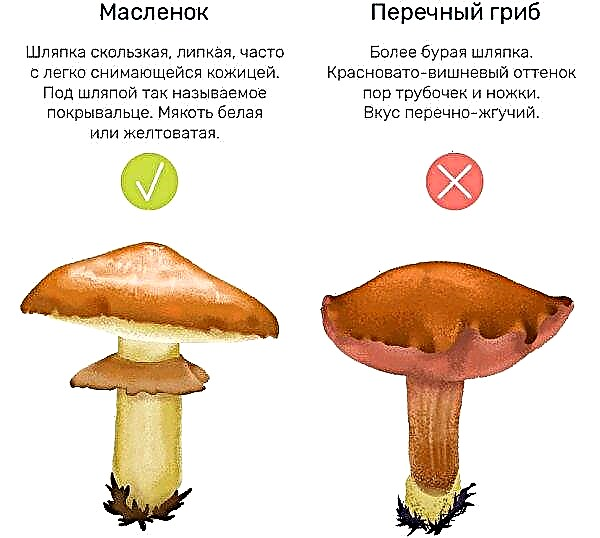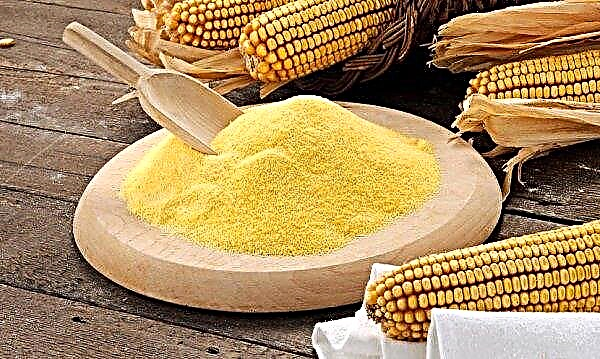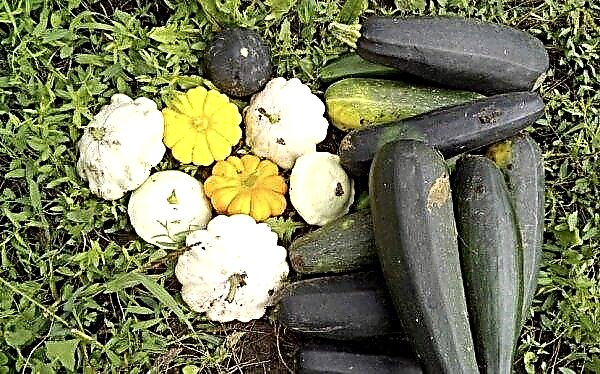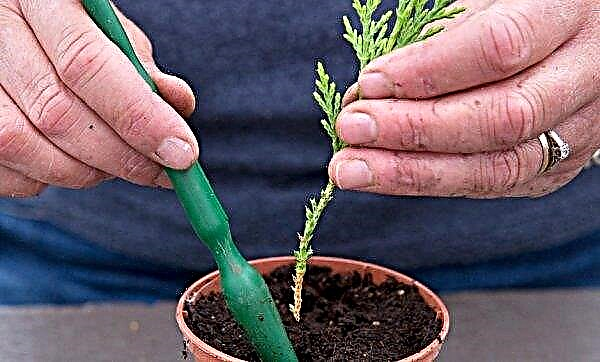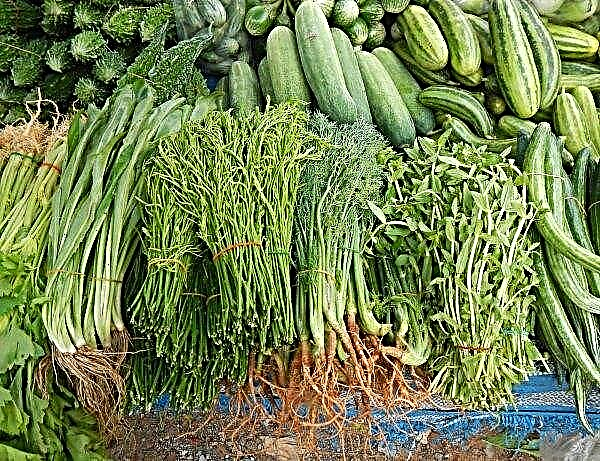Hydrangeas have long gained steady popularity as an ornamental shrub for landscaping personal plots, parks and squares. A plant with large inflorescences looks attractive and goes well with many other species. Currently, there are a large number of varieties and new ones appear periodically, one of which is Unique.
Grade description
Panicula Hydrangea Unique (Hydrangea paniculata Unique) - a sprawling shrub bred in Belgium in the middle of the twentieth century. The breeders who developed the variety are a couple of nerds De Beller from Antwerp. In 1993, more than 40 years after its appearance, the variety was awarded the Award of Garden Merit by the Royal Society of Gardeners.
Unique Hydrangea variety has strong and tough shoots, densely strewn with leaves. In height, plants can reach 2.6-2.8 m and have approximately the same parameters in width. The bush grows straight up, forming a spherical, and sometimes irregularly shaped crown.
Annual growth is about 20 cm. Inflorescences can reach 30 cm in length, they are “full” and plentiful, as a result of which branches can sometimes bend under their weight. The shoots are covered with a crust of red-brown hue, which on the young shoot has a fringe, and with age it “balds” and exfoliates.
The roots are well developed, have a superficial location and, under favorable conditions, grow wider than the crown. This circumstance should be borne in mind when choosing a landing site: it should be spacious and without growing crops in the vicinity with a creeping root system. Dense green leaves have a raised surface, with serrated edges. They are located opposite, sometimes in whorls of 3 pieces. The shape is oval, reaching 10–15 cm in length, and 6–8 cm in width.
Inflorescences are large enough, wide-pyramidal, rounded apices. They are formed on most shoots of the current season, at the base they are 20–25 cm wide, reaching a height of 30 cm. The fruit tree does not bear fruit, the flowers are sterile, consist of 4 petals, the color of which varies with flowering time. Immediately after blooming, they have a light green hue, then turn white, at the peak of flowering they become purple or pink.
Important! Unic or Unicum absolutely corresponds to its name, as it has the largest bush and inflorescences among all varieties of hydrangea.
The color of the petals depends on such factors:
- flowering time;
- degree of illumination: in a place well lit by the sun, they acquire a pink hue, in the shade they turn green;
- soil type - in the substrate, with an acidic pH level, the color becomes more intense.
Application in garden design
Due to its attractive appearance, endurance, and compatibility with other plants, Unik is actively used in landscape design. In addition, the variety quite normally carries gas polluted air, which makes it possible to plant it in the city.

It can be used in various compositions and elements of decorative gardening, such as:
- alpine hill;
- small Japanese garden;
- heather garden;
- as a tapeworm on a lawn or bulky flower bed;
- as the central figure of the composition, surrounded by smaller shrubs (dwarf thuja or fir, boxwood, etc.);
- in combination with mahogany, lilac, roses, shrubs with red leaves (plum, Japanese maple, etc.);
- as a hedge;
- like a plant in tubs that can be transferred from place to place, slightly changing the image of the garden, changing the composition.
Since the shrub is quite large and lush, planting it in a certain way and forming a crown, you can visually smooth the tier or slope of the site (for example, by planting the shrub in a line on an inclined plane, at regular intervals, keeping the tops at the same level). It looks good surrounded by flowers, especially bright colors (roses, irises, tulips). It goes well with almost any color of needles, and due to its high growth, Unique can be planted next to coniferous plants, both tall and short.

Landing
Unik is planted in spring or autumn. The advantage of the first option is that the plant will bloom in the coming summer.
Did you know? Hydrangea ended up in Europe in 1820, having got there from Japan, and at the turn of the 19th and 20th centuries plant breeding began. The first European varieties were bred by the French Nancy, Muer, Lemoine, Vendome, and by the end of the 50s of the twentieth century there were already more than 90 varieties.
Choosing a place to grow
When choosing a site for growing Unique, you should look for a place approximately corresponding to the following description:
- wind protection is desirable, especially from the north side;
- shade of the place after dinner;
- loose, well-drained soil with good moisture permeability;
- pH level 4.5–5.5.
The most suitable place for the cultivation of Unic hydrangea can be considered a small hill or slope, especially in the south or in the southeast directions. If from the north this location will be protected by the wall of a building, or by dense planting of tall bushes or trees, and the type of soil corresponds to the above, consider that you have found the ideal site.

Soil preparation
As already mentioned, the variety loves acidic or slightly acidic soils. However, far from every site you can find a similar type of soil. However, if the land in your garden does not meet the requirements, do not worry, everything can be corrected.
The substrate is acidified by applying some time before planting (if planted in the spring, the procedure is carried out in the fall), coniferous litter, sphagnum moss, peat and well-rotten manure. In addition, in the soil, you can add mineral fertilizers that can adjust the pH level in the right direction. To do this, use ammonium sulfate or potassium sulfate (2 tbsp per 1 m²).

Seedling selection and preparation
Hydrangea seedlings can be obtained independently using the methods of reproduction described below. This can be done if you or your acquaintances grow this variety and have the time and opportunity to engage in plant breeding. You can purchase high-quality planting material in the nursery or from experienced gardeners engaged in such activities. Saplings at the age of 2-3 years are best rooted. If these plants are properly planted and conditions are created, they will bloom in the coming summer.
Important! All parts of hydrangea contain cyanophore glycosides - substances that can cause poisoning of the body. So the plant is considered poisonous.
In nurseries, seedlings with a closed root system are most often sold, they are good because they can be planted in spring and autumn. If you bought planting material without a container, plant it as soon as possible. In such plants, when buying, you should carefully examine the roots - they should be sufficiently moistened, not have the slightest signs of dryness. Foliage and stalk - uniform color, without dark or yellow spots and without signs of wilting.

Landing algorithm
Hydrangea is planted as follows:
- Pits should be prepared on the selected site a few days before planting. Their depth should be in the range of 50–60 cm, and their diameter should be 60–80 cm, depending on the volume of the root system. The distance between neighboring plants of the same species, or any other, is 2.5-3 m.
- Lay a 15–20 cm thick drainage layer in each well. For this purpose, expanded clay, cracked brick or tile, gravel, or a mixture of these materials with sand can be used. Then shed each hole with one bucket of a solution of "potassium permanganate in boiling water" (1 tbsp. L. Per 10 liters). Follow this procedure should be 2-3 days before planting, so that the earth has time to dry.
- In the meantime, you need to prepare the substrate. To do this, mix equal parts of chernozem, humus, sand and peat. For each bucket of the mixture, add 2 tbsp. carbamide and 5 tbsp. superphosphate, mix thoroughly.
- Lay a layer of soil mixture 10-15 cm thick on the drainage so that the root neck of the seedling mounted on the earthen embankment is flush with the edge of the pit.
- A seedling with a closed root system must be removed from the container along with a lump of earth, which is slightly shaken off. In that case, if the roots are open, they are slightly pruned.
- Place the plant on the embankment, straighten the roots, fill the hole with the prepared substrate so that the neck is slightly below ground level. Within a radius of 40–50 cm from the bush, make a near-trunk circle 10–15 cm high.
- Pour 1-1.5 buckets of warm water under each bush and mulch with peat, sawdust or needles.

Care
The Unic hydrangea care measures should not cause you much difficulty. Especially if you correctly completed the preliminary work (picked up a place, prepared the soil, acquired high-quality seedlings) and planted shrubs.
Watering
Young hydrangea seedlings should be watered every 3–6 days, 1-1.5 buckets of water are needed per bush. In this mode, Unic is moisturized for the first 5–7 weeks until the plant takes root. Unique adult is irrigated 6-8 times during the growing season with the usual amount of rainfall; in the driest season, the crown is additionally sprayed.
Did you know? Hydrangea has an interesting property - it is able to accumulate aluminum from acidic alumina in its own tissues. Due to this quality, the mineral gives blue and violet shades to the flowers of some plant varieties.
Top dressing
Fertilizers are applied, on average, three times during the growing season. You can do this according to the following scheme:
- Early spring. Before the sap flow begins, nitrogen is added, one year - organic matter (rotted cow dung or poultry manure), the second season - mineral (potassium or calcium nitrate - 2 tbsp. / 1 m², the same amount of urea). In addition, 20 g nitroammophoski is introduced into the trunk circle under each bush.
- The end of June - the beginning of July. Attention should be paid to potassium and phosphorus (potassium salt and superphosphate, 2 tbsp. L / 10 l of water for each bush).
- Fall. Nitroammofoska (3 tbsp. L / bush). During the autumn digging, add 1 bucket of peat per 1 m² to the soil.

In addition, periodically, for better flowering, during the summer it is necessary to spray the crown from the spray with a light pink solution of potassium permanganate.
Loosening and mulching
If the soil under the bush is not mulled, it should be loosened after each watering. This should be done superficially, to a depth of not more than 5-6 cm. In addition, aseptic treatment should be performed 2-3 times during the summer, spilling the near-stem circle with a solution of potassium permanganate (1 tsp / 1 bucket of water).
Pruning
In early spring, before the buds begin to swell, they perform sanitary pruning. Dry, frostbitten, damaged, diseased and weak shoots are removed. Inflorescences that have already faded are cut to the first healthy bud. All shoots of the last season are shortened by 1/3 of the length, and those that create excessive bushiness (especially those growing perpendicular to the ground) are cut to the root.
In order to rejuvenate adult hydrangea, the branches are cut to the very base. This procedure stimulates the growth of young shoots, as a result, the plant becomes younger and healthier. Forming clippings are extremely rare, and only if they are necessary, for example, when arranging a hedge.

Shelter for the winter
Unique has a fairly high frost resistance. Adult hydrangea normally tolerates frosts up to -30 ° C, having protection from the north wind. In the event that the shrub is located in an open area, he is not afraid of winters with temperatures up to -25 ° C. A plant located in a closed place from the north, east or west, for example, located in the corner of the garden, can winter at -33 ° C.
In the indicated temperature regime, an adult Unique can stay without additional shelter. The maximum that threatens the plant is a slight freezing of the tips of the shoots, which is easily fixed in the spring with the help of sanitary pruning. But young plants need to cover the first few years.

Breeding
If Unic hydrangea is already growing on your site, it can be propagated. In this case, you will not need to buy seedlings, it will be enough to use the mother plant in order to get a new one. There are 4 methods of plant propagation, each of which will be discussed in more detail below.
Did you know? The botanical name of Hydrangea is Hydrangea, which in Greek means "vessel with water." The name speaks for itself about the moisture-loving nature of the culture. And the Japanese call the Adzisai plant, or "a flower that looks like a purple sun."
Cuttings
The most popular method of reproduction because of its effectiveness, as well as for the reason that this procedure does not require a lot of skills or special knowledge and skills. Among the few disadvantages of the method, it is possible to single out, probably, only a sufficiently long time to obtain an adult plant.
The procedure is performed as follows:
- The first step is to prepare the cuttings. They do this during the spring sanitary pruning, or in mid-June, from about 9 to 16. At this time, the shoots of the plant are sufficiently filled with water, which contributes to better rooting.
- In the event that you harvest cuttings in early spring, cut them so that each has 4-5 buds.
- Seedlings should be placed in a container with a growth stimulator (Kornevin, Epin, heteroauxin, succinic acid) for a couple of days.
- Prepare a site for growing cuttings: well loosen the ground, break up large clods. It is desirable that the soil has a slightly acidic reaction (pH 4.5–5.5) and conducts moisture well. To do this, when digging, you should make 2 buckets of sand for each square meter, and 2 tbsp. ammonium sulfate or potassium sulfate.
- Stick the cuttings into the prepared soil so that the bottom cut is 2 buds in the ground, and the distance between adjacent shoots is about 20–25 cm. Cover the plantings with garden foil.
- Immediately after planting, the cuttings should be shaded for a while. In addition, they need to be regularly sprayed with a spray gun and loosen the bed, periodically remove the film, constantly increasing the airing time. After the appearance of the first leaves, the shelter is removed completely.
- In late autumn, just before the onset of frost, young growth should be covered with spruce branches. With the advent of spring, you need to remove the first peduncles - this is necessary for better root growth.
- Plants are planted in a permanent place after 3-4 seasons.
- When harvesting cuttings in June, take the lower sections of shoots, up to 10 cm in length, without buds.
- Planting material should not be cut off, but broken off with a “heel” - so the plant roots better. You can not use pruning shears or scissors, these tools can deform the fibers. The lower part of the shoot should be cleaned of bark, remove all green mass, leaving only a few upper leaves (this procedure prevents the evaporation of moisture).
- Further care is the same as described above for spring seedlings (shading, shelter, watering). Rooting occurs after 3-4 weeks. When the stalk has taken root and begins to grow, it must be transplanted with a lump of earth to a permanent place, previously watered abundantly.

Layering
This method allows you to quickly and easily grow young hydrangea. The method is as follows:
- In March, on the parent bush, you need to select the lower side branches from which you will make layering.
- Shallow grooves should be made next to the mother plant. On selected shoots, carefully remove that part of the bark that should be in the ground. Lay the branch with the cleaned fragment in the ground, fix it with wire brackets, sprinkle it with a nutrient substrate (peat, turf soil, humus in equal parts, with the addition of 5 tbsp superphosphate per 5 l of the mixture).
- Further care consists in regularly moistening, adding, if necessary, earth.
- For the winter, the layers are covered with spruce branches, and in the spring they are carefully separated from the mother bush and transplanted to a permanent place.
Dividing the bush
Not the most popular method for the reason that the described hydrangea is a fairly fast-growing variety. The bush grows in a short time, and it is rather difficult to divide an adult plant. Among the advantages of the method, one can single out that you plant an almost adult plant in the ground that is absolutely adapted to your site.
Perform the procedure in the spring, most often together with a transplant. The procedure is as follows:
- The plant must be abundantly moistened, and then carefully dug up, trying to cause as little damage to the roots as possible.
- Remove excess earth from the root system, put the bush on a flat surface. Using a sharpened shovel or secateurs, divide the root into 2-3 parts so that several healthy and strong shoots remain on each dividend.
- At this point, you should already have prepared a plot for growing dividends (holes, top dressing, drainage - all as described above). Set seedlings in pits, cover with a nutrient substrate and water. Further care is the same as for an ordinary young plant.

Sprout
When Unique grows in favorable conditions, receives enough moisture, top dressing, with suitable lighting, young shoots appear around hydrangea. They can be used for further propagation of the culture. Do it in the fall, when the young growth is strong enough.
The advantage of the method is the absence of the need for special preparation of planting material - it will grow on its own, it just needs to be taken in one place and transplanted to another. This simplicity of the method has a flip side: if there is no young growth, there is no planting material (and, as already mentioned, young growth does not always grow and only under favorable conditions). This circumstance, perhaps, can be called a minus of the method.
Important! As a growth promoter, you can use a solution of honey in pure water (1 tsp / 1 glass of liquid).
The procedure itself is quite simple:
- Dig the selected shoot carefully on one side and carefully separate it from the mother's root.
- Plant a seedling in a new place, moisten abundantly. The first time to water often enough, but in a moderate amount. Make sure that the soil does not dry out. For winter, cover with spruce branches.

Although Unique also needs to create certain conditions for normal growth (first of all, it concerns the acidity of the soil), in the future care for hydrangea is simple, a novice gardener can also cope. But the plant is distinguished by the impressive size of the crown and beautiful lush inflorescences. These circumstances make it possible to use Belgian selection hydrangea varieties in decorative landscaping - large bushes give a lot of shade, an impressive hedge can be formed from them. And beautiful clusters are combined practically with any trees, bushes and flowers.

